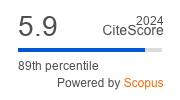Article | Open Access
Media Roles in the Online News Domain: Authorities and Emergent Audience Brokers
| Views: | 4490 | | | Downloads: | 2272 |
Abstract: This article empirically tests the role of legacy and digital-born news media, mapping the patterns of audience navigation across news sources and the relationship between news providers. We borrow tools from network science to bring evidence that suggest legacy news media retain control of the most central positions in the online news domain. Great progress has been made in discussing theoretically the impact of the Internet on the news media ecology. Less research attention, however, has been given to empirically testing changes in the role of legacy media and the rising prominence of digital-born outlets. To fill this gap, in this study we use the hyperlink-induced topic search algorithm, which identifies authorities by means of a hyperlink network, to show that legacy media are still the most authoritative sources in the media ecology. To further substantiate their dominant role, we also examine the structural position of news providers in the audience network. We gather navigation data from a panel of 30,000 people and use it to reproduce the network of patterns of news consumption. While legacy news media retain control of the brokerage positions for the general population, our analysis—focused on patterns of young news consumers—reveals that new digital outlets also occupy relevant positions to control the audience flow. The results of this study have substantive implications for our understanding of news organizations’ roles and how they attain authority in the digital age.
Keywords: digital audience; digital-born media; hyperlinks; legacy media; network analysis; news; online news
Supplementary Files:
Published:
© Sílvia Majó-Vázquez, Ana S. Cardenal, Oleguer Sagarra, Pol Colomer de Simón. This is an open access article distributed under the terms of the Creative Commons Attribution 4.0 license (http://creativecommons.org/licenses/by/4.0), which permits any use, distribution, and reproduction of the work without further permission provided the original author(s) and source are credited.


